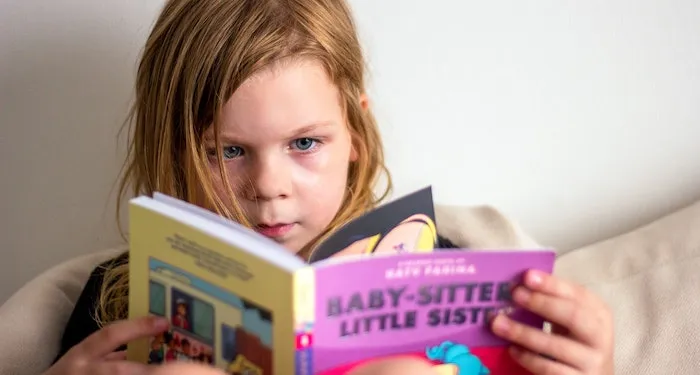The title Mary Shelley in Bath may prompt an incredulous smile until one realizes that the Bath in question is the sleepy Georgian spa town in the west of England more commonly associated with Jane Austen. There, in the autumn of 1816, a girl of barely nineteen swiftly and confidently created a masterwork: Frankenstein; or, The Modern Prometheus.
Early that summer Mary Wollstonecraft Godwin; her lover, the poet Percy Bysshe Shelley; and Mary’s spirited stepsister, Claire Clairmont, who was pregnant by Lord Byron, had settled into Maison Chapuis on the southern shore of Lake Geneva, together with Mary and Shelley’s ill-fated baby son, William—or more lovingly, Willmouse—who would die of malaria three years later, and his young Swiss nurse, Elise Duvillard. On June 15 they visited the newly arrived and far more celebrated Byron and his young, handsome, diary-keeping doctor, John Polidori, at the nearby Villa Diodati. Mary and Shelley chatted with their hosts about a hot new subject in the medical world: the possibility of creating man without the assistance of a divine spark.
On the following evening, the friends gathered for a spot of specter-raising. A blazing fire was lit for what became a legendary scene in the notorious summer of darkness caused by Mount Tambora’s eruption in April 1815, which dimmed sunlight across the globe for months and provided the title “Darkness” for one of Byron’s finest poems. At his suggestion, the group read aloud in turn from a translated collection of German fantasy tales. When Byron announced his plan for each of them to write a ghost story, they agreed.
A couple of evenings later Byron decided to enliven the imaginations of his storytelling group with a dramatic nocturnal recitation from Coleridge’s newly published poem “Christabel.” (Earlier that year he had helped subsidize its publication.) Shelley, spooked by its allusions to a vampiric woman’s deformed breast, imagined that Mary’s modestly covered nipples were twin eyes glaring at him. He began to shriek and continued until Dr. Polidori managed to calm him by applying an ether-soaked cloth. According to Mary’s private account to Thomas Moore in 1828, her idea for the story of Frankenstein was born during that week of competitive story-making.1 By 1831 she had either forgotten that version or—far more likely—changed her mind.
Shelley scholars have always been maddened by the mysterious disappearance of the crucial journal that Mary evidently kept during their creative summer by the lake. In 1831 she described for the first time a “Kubla Khan”–like reverie in which, after frustrating days of waiting for a suitable ghost story to enter her impatient mind (“I thought & pondered—vainly”), she had actually seen Victor Frankenstein (“the pale student of unhallowed arts”) kneeling beside his man-made creation as it first stirred “with an uneasy, half vital motion.” Is it possible, given the impoverished young widow’s urgent need to dramatize the way in which the story of Frankenstein first came to her—she was at work on an attention-grabbing preface for an updated edition of her famous novel—that Mary “lost” that revealing journal intentionally after financial considerations intervened? Indeed it is.
We know for certain that Mary opened her next journal with a meticulously detailed account of an alpine excursion she undertook with Shelley and her stepsister but not with Byron, whose aversion to his visibly pregnant young mistress was increasing by the hour. The journal’s fourth entry was written on July 24, 1816, the first day on which bad weather forced her to take time off from the joy of mountain rambles. That entry included a striking injunction: “Write my story.”
The story, clearly, is Frankenstein, but does the statement “Write my story” really mark the novel’s birth on paper? Was Frankenstein first breathed into life in the shadow of Bath Abbey, or had Mary already started to construct her masterpiece over a month earlier, while she was living beside Lake Geneva? Short of the miraculous emergence of that conveniently mislaid journal of 1816, we shall never know. What we do know is that Mary’s carefully recorded alpine ascent from Chamonix to the Mer de Glace would provide the scene for Victor Frankenstein’s first meeting with his rejected Creature and that she wrote about that unforgettable encounter during the time she was living in Bath.
While countless novels and films have had their way with the stormy summer by the lake during which she first conceived her ghost story, Mary Shelley in Bath—a slight but pleasing selection from her letters, journal, and work-in-progress during the autumn of 1816—enables Frankenstein devotees to focus for the first time on its growth (with Shelley’s forceful encouragement) from a simple ghost story to a three-volume novel.2 Returning by boat to Portsmouth on September 8 with an outline but not yet a fully developed plot for her book, Mary headed west, toward Wales. Bath was a town sufficiently remote from London for Claire to give birth in seclusion to Byron’s baby without arousing the suspicions of her mother and stepfather, the self-styled Mary Jane Clairmont and William Godwin, the political philosopher turned novelist. (Since Fanny Imlay, Mary’s reticent and more docile older half-sister and daughter of Mary Wollstonecraft, still lived—not happily—in London with the Godwins, she also had to be kept in the dark.)
The plan was simple. While Claire, now calling herself “Mrs. Clairmont,” lay low in Bath and Mary worked on her novel, Shelley hunted for a more permanent home for them all at Thames-side Marlow (close to his friend Thomas Love Peacock). As to whom precisely that “all” should encompass, views differed. Mary, while reluctantly toying with the notion of providing a future “assylum” for Fanny, who adored Shelley and revered her younger half-sister, was explicit in her insistence that Claire should form no part of their household. Shelley kept to himself a fantasy of making room in their new home not only for Claire and her baby but also for Harriet Westbrook, the wretched young woman to whom he was still married. (He had suggested a similar arrangement to Harriet back in 1814, when he, Mary, and Claire undertook their first expedition to Switzerland, where Shelley’s plan for a progressive-minded family commune foundered for lack of funds. Understandably his pregnant and abruptly abandoned wife had declined his chivalrous invitation.)
Reaching Bath on September 10 and blissfully unaware of Shelley’s expansive home-share schemes, Mary wasted no time in finding rooms for herself, the nurse, and baby William next to the city’s fashionable Pump Room, in a house belonging to the publisher of Bath’s leading newspaper, The Bath Herald. Claire was settled nearby at a slightly less elegant address in New Bond Street. (A Georgian city map might have made a handy addition to a book about Mary’s life in Bath.) Conscious of Claire’s love of music—and probably keen to provide her needy, lovelorn stepsister with an occupation—Mary rented a piano to help pass the last four months of her pregnancy.
For seekers of seclusion, Bath was a strange choice, as was Mary’s decision to take lodgings in its most sociable quarter. Once known only for its curative waters, Bath had by then become the popular marriage market that Jane Austen wittily mocked in Northanger Abbey and revisited more pensively in Persuasion.3 Austen had spent five years in Bath (1801–1806) only a decade before Mary’s arrival with Claire; little had changed during the interim. Any reader in search of the historic city where most of Frankenstein was written will learn more from a visit to the Jane Austen Centre on Gay Street (complete with period actors, try-on costumes, fancy notepaper, and quill pens) than from the “emotive soundtracks, bespoke smells and effects” on offer at the nearby Mary Shelley’s House of Frankenstein, where themed “escape rooms” herald the descent to an enticingly creepy basement.
One of the most intriguing aspects of the creation of Frankenstein relates to the degree of influence exerted by Shelley. In visible terms, it amounts to about 4,000 of the 72,000 words of the first (1818) version; the two Bodleian draft notebooks covering the period August 1816 to March 1817 offer clear evidence of his direct involvement. Mary, the more active contributor, wrote in a generous looping hand, using brown ink. Shelley’s generally rather pedantic insertions, in black ink or pencil, often strove to heighten his collaborator’s straightforward language, altering “add to” to “augment,” “talked” to “conversed,” “painting” to “representation.”
There were instances when Shelley was able to improve on Mary’s draft. It was he who suggested that the ill-treated Creature should echo Milton’s Satan in declaring that “evil henceforth became my good.” For the most part, however, Shelley acted as a quietly empathetic editor, reinforcing the novel’s powerful argument for compassion, tolerance, and good parenting. (Victor Frankenstein proves a brutishly callous parent when he judges his man-made creation’s spirit to be in keeping with its grotesque appearance and as a result misconstrues the giant’s first innocent overtures of friendship as acts of hostility.)
Shelley’s more important contribution to Frankenstein is invisible and thus much harder to assess. One significant clue emerged soon after Mary’s arrival in Bath. During her first week there, she did little work—only four days out of seven—on her novel. During the second week, when she met up with Shelley at Marlow, the couple studied Émile (1762), the influential novel in which Rousseau discussed the problems of education and how it should be delivered. His teachings reinforced the Shelleys’ belief that society had a duty to encourage and support each child’s inherent virtue.
By the third week, when Shelley joined Mary in Bath, a pattern had been established. At the end of Mary’s writing day, he read aloud to her; in November they began reading Paradise Lost and Plutarch’s Lives. Mary had read both Milton and Plutarch in 1815, but their powerful connection to Frankenstein’s themes suggests that the books were revisited by joint design. It’s not by chance that the exiled Creature, having taught himself to read, learns to experience “the greatest ardor for virtue…and abhorrence for vice” from Plutarch and finds a mirror for himself in Milton’s exiled Satan: “wretched, helpless, and alone.”
Mary’s writing thrived on Shelley’s company and creative input: their shared reading experiences in Bath suggest that the intensely literary couple spent many hours discussing the novel’s content and purpose with mutual enjoyment and interest. Writing to their friend Leigh Hunt in 1838, sixteen years after Shelley’s untimely death, Mary remarked that collaboration always adds “zest & vivacity” to a project. Back in 1818, however, while she was happy to quote from Shelley’s 1816 poem “Mutability” in her anonymously published masterpiece and even to let him contribute an unsigned preface, she was quick to inform an admiring Walter Scott that she—not, as Scott had assumed, her brilliant husband—was Frankenstein’s author. Adding her own signed preface in 1831, Mary banished Shelley’s collaborative role with a bald assertion: “I certainly did not owe the suggestion of one incident, nor scarcely of one train of feeling, to my husband.”
Connections can easily be made between the composition of Frankenstein and the books that Mary read while she was in Bath. She didn’t even need to leave her new home to find them: one of the attractions of 5 Abbey Churchyard (as Fiona Sampson’s useful introduction to Mary Shelley in Bath points out) was that its owner’s chief tenant had converted the ground floor into a public library and reading room. Starved of the scientific lectures that were more readily accessible in London (Bath’s respected Royal Literary and Scientific Institution hadn’t yet been founded), Mary resorted to a library copy of Humphry Davy’s A Discourse, Introductory to a Course of Lectures on Chemistry (1802) for practical help in describing Victor Frankenstein’s dawning obsession with science. Keen to add authentic detail to the dangerous arctic quest of Robert Walton—the explorer’s journey provides the novel both with its ingenious framing device and with a character whose ambition mirrors that of Victor Frankenstein—she studied accounts of various “old voyages” and new ones by seekers of a northwest passage and a supposedly ice-free pole. Handsome tribute was paid in Frankenstein to Coleridge’s “Rime of the Ancient Mariner” (Mary had heard him reciting his famous poem to her father when she was still a child), a debt acknowledged when Walton playfully promises his sister—Margaret Walton Saville shares Mary Wollstonecraft Shelley’s new initials—to bring no albatross home from his travels.
The ways in which Frankenstein’s development was influenced by books, conversations, and even a dramatic alpine excursion can be tracked and identified. The potent connection between the novel’s dark mood and two dreadful events that took place during the autumn of its creation proves harder to define.
Mary’s fraught relationship with her admiring but far less brilliant elder half-sister, Fanny Imlay, had reached a minor crisis during the summer of 1816. Fanny, homebound in London while Mary and Shelley enjoyed the glamour of Byron’s friendship, wrote that their stepmother (the second Mrs. Godwin) had reported that she, loyal Fanny, had been transformed into Mary’s “laughing stock—& the constant beacon of your satire.” Was Mrs. Godwin right? A remorseful Mary went shopping with Shelley in Geneva and bought Fanny an expensive compensatory gift: a gold watch. But Fanny remained an outsider. Byron was urged to join Mary and Shelley in Bath. Fanny was not.
A sisterly quarrel began to brew again toward the end of September. On October 3 Fanny hotly denied Mary’s apparent accusation of having spread gossip about their stepmother “‘persuing you like a hound after Foxes’—I do not chuse to be made the author of a glaring falsehood.” The same letter of self-defense—a “stupid” one, in Mary’s impatient view—went on to reproach Shelley for failing in his promise to provide funds to the ever-indigent William Godwin. Five days later, on October 8, a lost letter from Fanny to Mary may have expressed a wish to visit them in Bath before—as Fanny had indicated to Godwin from Bristol on that same day—ending her life.4 I say “may” because a further “very alarming” letter, sent from Bristol on October 9, frightened Shelley into immediate action: he “jumped up thrust his hand in [his] hair—I must be off,” Claire recalled. Was he acting from guilt? Did he and Mary feel that they could have done more to help Fanny? We’re unlikely ever to know the answer.
On October 12, having made two anxious visits to Bristol and a further one to Swansea (the next coach stop on Fanny’s journey west), a gray-faced Shelley returned to Bath with what Mary described in her journal as “the worst account”: Fanny, dressed by intention in her beloved mother’s initialed undergarments and still wearing her cherished gold watch from Switzerland, had been found dead in a Swansea inn. Before swallowing a bottle of laudanum, the unhappy young woman had written a suicide note explaining that she was ending the life of “a being whose birth was unfortunate” and whose existence laid a burden on those “who have hurt their health in endeavouring to promote her welfare.” Mary, instructed to stay away (“Go not to Swansea,” Godwin warned his daughter in his first written communication with her since July 1814), obeyed. On Godwin’s orders, discretion was maintained; friends learned that Fanny had died of a fever en route to join her mother’s sisters in Dublin as a teacher. Ten months later Fanny’s half-brother Charles Clairmont was still unaware of her death.
Two months later to the day, a newspaper identified the missing body of Harriet Westbrook. Heavily pregnant with what may well have been Shelley’s child (despite asserting that she had become a prostitute and the lover of a stable groom, her husband never denied paternity), she had drowned herself in the Serpentine. A dismayed Shelley blamed Harriet’s beloved older sister, Eliza Westbrook, for the tragedy before rushing to London to claim his children, imagined by the sympathetic Mary as the “darling treasures” whom she longed to welcome into their home (as long as they did not usurp her precious Willmouse’s place). Despite the hastily arranged marriage of a couple who had hitherto prided themselves on their open relationship, little Charles and Ianthe Shelley were officially awarded, as Harriet had hoped, to the care of Eliza.
Impossible though it is to connect the shocking suicides of Fanny and Harriet to any particular event in Frankenstein, a sense of indirect responsibility for the deaths of these unfortunate young women undoubtedly haunted the minds of its two creators, strengthening their sense of identification with both the rejected Creature and the monstrous creator who spurns his man-made child. Shelley, writing to his new friend Leigh Hunt in December 1816, described himself as “an outcast from human society,” lamenting that, with a few benevolent exceptions, “all else abhor & avoid me.” Mary, who returned to the theme of the outcast in her dystopian novel The Last Man (1826), waited until 1839 to make a private entry in her journal that acknowledged her own enduring sense of guilt about “poor Harriet to whose sad fate I attribute so many of my own heavy sorrows as the atonement claimed by fate for her death.”5
That belated admission was an act of unusual candor by a writer whose cipherlike entries create many obstacles for readers of her journals. Mary’s habitual prudence was tested to its full when Claire’s baby girl was born at Bath on January 12, 1817. Even in the privacy of her journal, the newly wed Mrs. Shelley marked the event only by noting that she had spent “four days of idleness.”
On January 26, two days after her son William’s first birthday, Mary returned from Bath to London. On March 18, following a brief stay at Leigh and Marianne Hunt’s crowded cottage in Hampstead, the Shelleys moved into their first marital home, at Marlow. Claire, together with little Alba (later renamed Allegra by Byron), joined the couple there at the end of the month. On May 13, after Shelley’s contribution of an unsigned preface to the completed manuscript of Frankenstein, Mary added a triumphant “Finis” and immediately started work on her next project: a travel book.
Most of the narrative of Mary’s engaging little History of a Six Weeks’ Tour was partly based, although she did not acknowledge this fact in print, on retained copies of the long, purposefully descriptive letters she had dispatched from Switzerland during the summer of 1816 as a kindness to the homebound and warmly appreciative Fanny. The reception of the travel book, cordially reviewed following its publication in November 1817, offered no preparation for the scorn, dislike, and alarm provoked in reviewers by its extraordinary successor.
First published in an anonymously authored three-volume edition of five hundred copies in December 1818, Frankenstein began its transformation into one of the best-known novels of all time in 1823, when Mary’s father cannily timed a reprint to coincide with the appearance onstage in London of the celebrated actor T.P. Cooke as the Creature in Richard Brinsley Peake’s Presumption; or, The Fate of Frankenstein. If successful, the play would, Godwin told Mary, who was returning home from Europe for the first time in five years, “be some sort of feather in the cap of the author of the novel” and useful for “your future negociacions with booksellers.”
Godwin was right. Cooke, dressed in a blue body stocking, performed the Creature 330 times in London and Paris. Peake’s adaptation inspired fourteen further stage versions of Frankenstein in the following three years. When the financially strapped Mary, writing her introduction to a revised version of the novel in 1831, urged “my hideous progeny [to] go forth and prosper,” she meant that she wanted it to make money. As Frankenstein’s fame increased, the name of its author began to compete with that of the late husband to whose poetic reputation Mary dedicated her life.
Today Frankenstein’s success onstage has been overtaken by more than twenty film versions, starting with a 1910 one-reeler for the Edison Manufacturing Company and proceeding, by way of Boris Karloff’s childlike, grunting monster and the camped-up midcentury romps from Hammer House of Horror, to Kenneth Branagh’s grimly authentic Frankenstein (1994), with Robert De Niro miscast as the Creature. This fall comes a new version by Guillermo del Toro, the Mexican director of Cronos, The Devil’s Backbone, Pan’s Labyrinth, The Shape of Water, and most recently a stop-motion animation Pinocchio set in Fascist Italy.
Del Toro says that Frankenstein is the film he’s always wanted to make. With the toweringly beautiful Jacob Elordi as the Christlike Creature sparked into life by Victor Frankenstein (a gleefully histrionic Oscar Isaac), del Toro—a master of unsubtlety—never loses sight of Mary Shelley’s central message about hubris, compassion, and good parenting. Victor’s father becomes a tyrannical surgeon who whips his son into obedience. Knowing no better, Victor chains his creature, rejects its overtures (“Don’t touch me!”), and blames it for everything that goes wrong—and plenty does.
A time-shift to the 1850s enables del Toro—who is always keen on contrasting cruel dictatorships and the violence of war with pure but not innocent children (or childlike characters)—to use the battlefields of the Crimean War as a backdrop to the battle of wills between Victor and the son whose revenge he incites. Mary Shelley, who delighted in Peake’s play, would rejoice at such a sensitive, tenderhearted interpretation of her most famous work. I’m less convinced that either of the Shelleys would have signed off on a script that ends with a tear-jerking shipboard reconciliation (“Forgive me, my son.” “Victor, I forgive you”) between the dying creator and his Creature in the arctic wastes before the clinching line: “Perhaps now we can both be human.” I wish I hadn’t been given such cause to giggle.



















 English (US) ·
English (US) ·